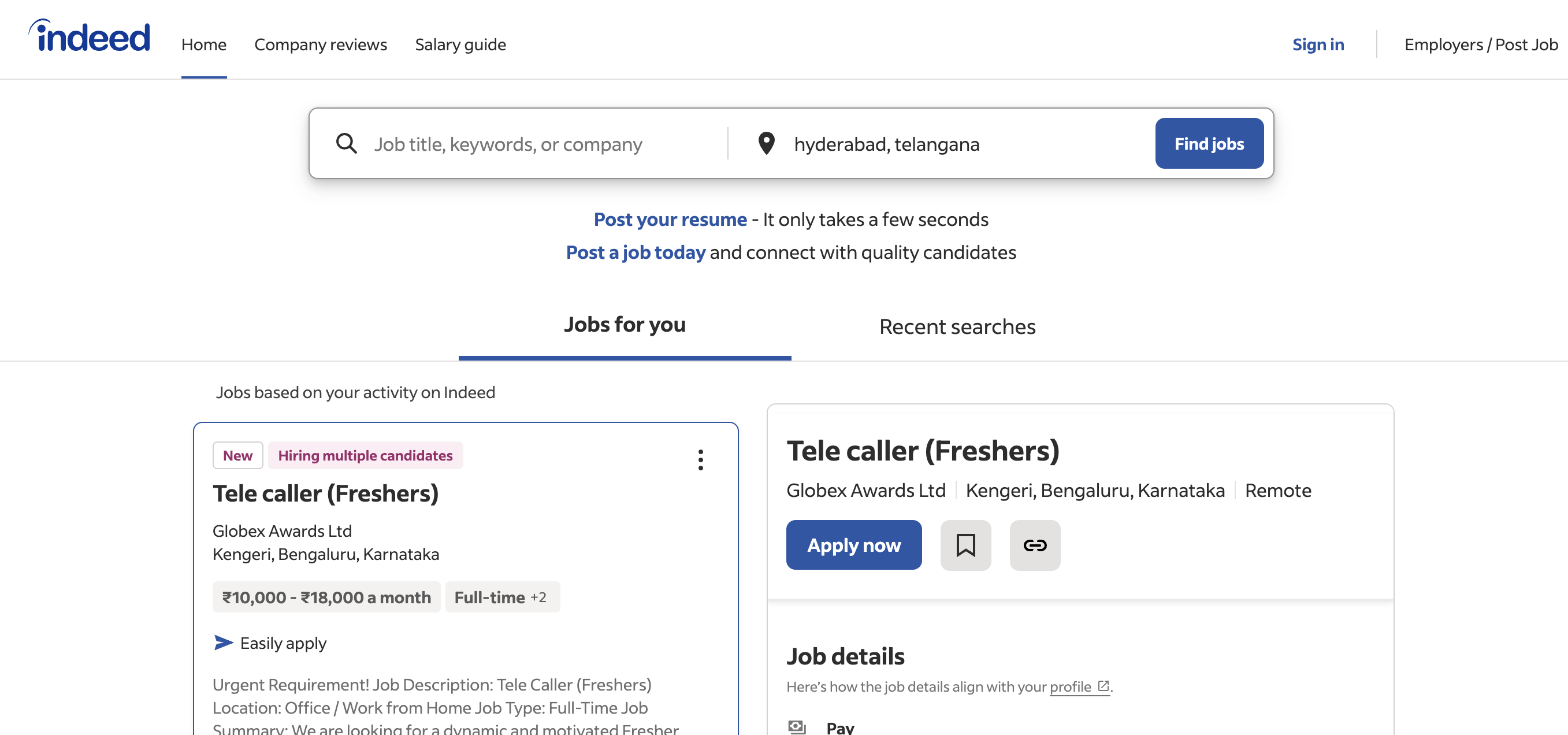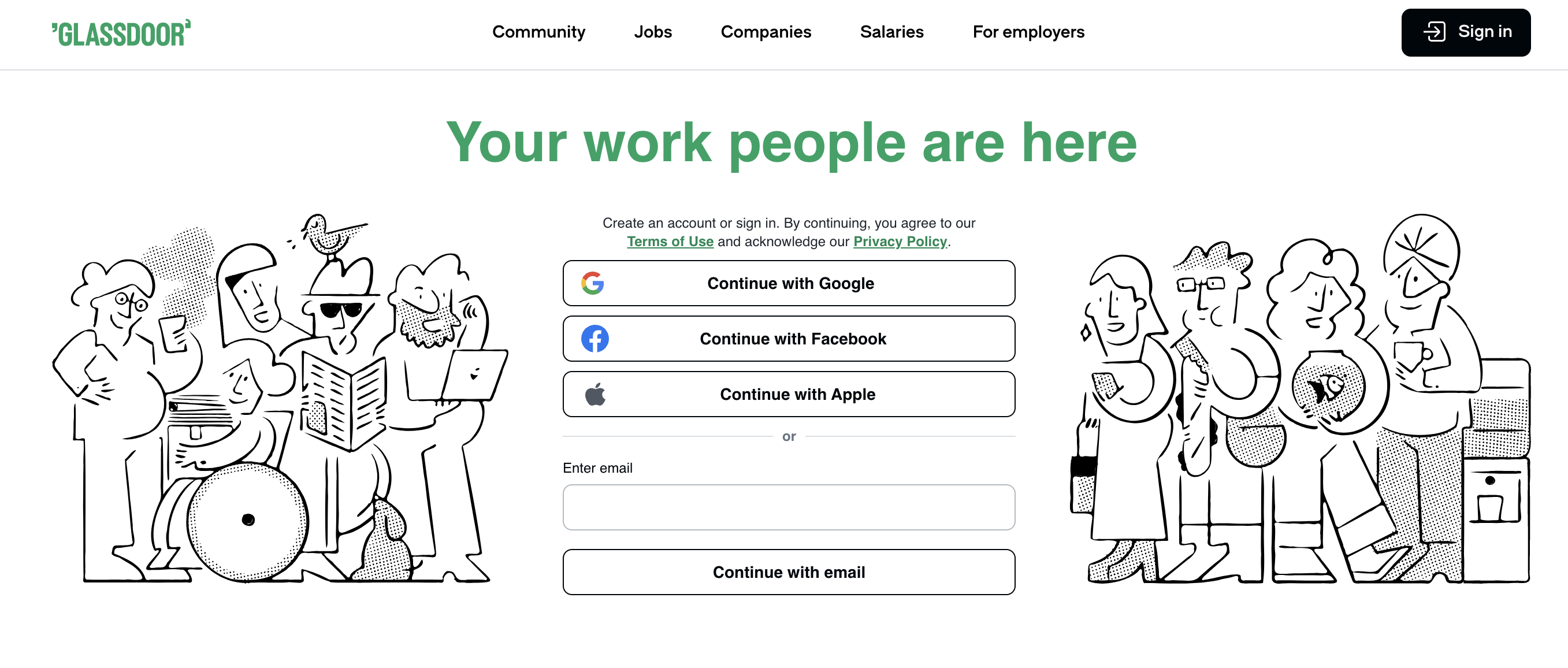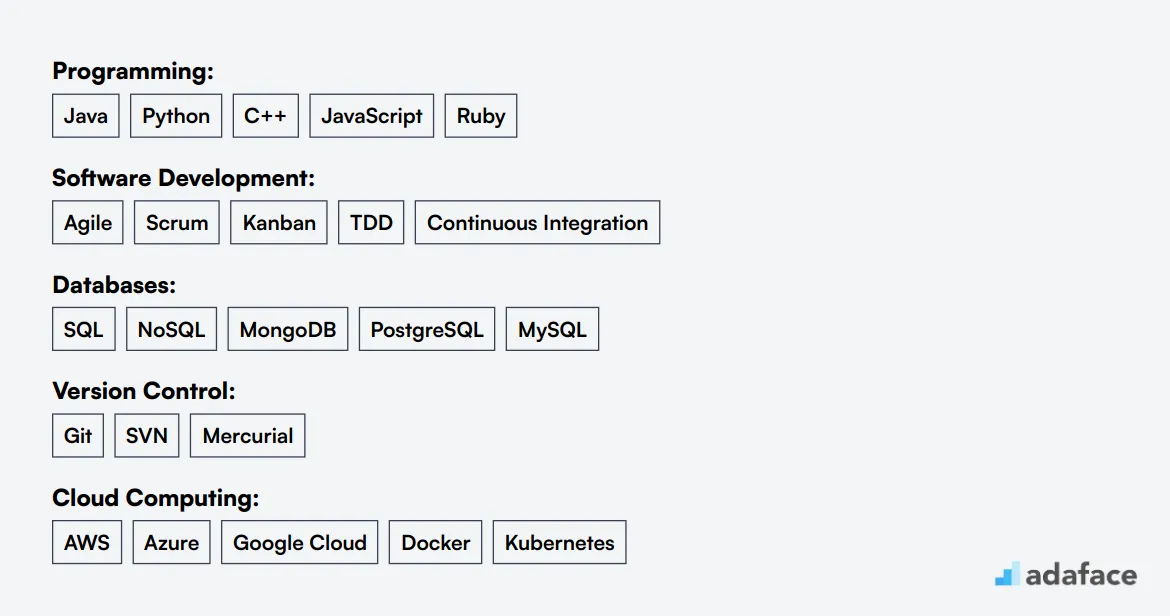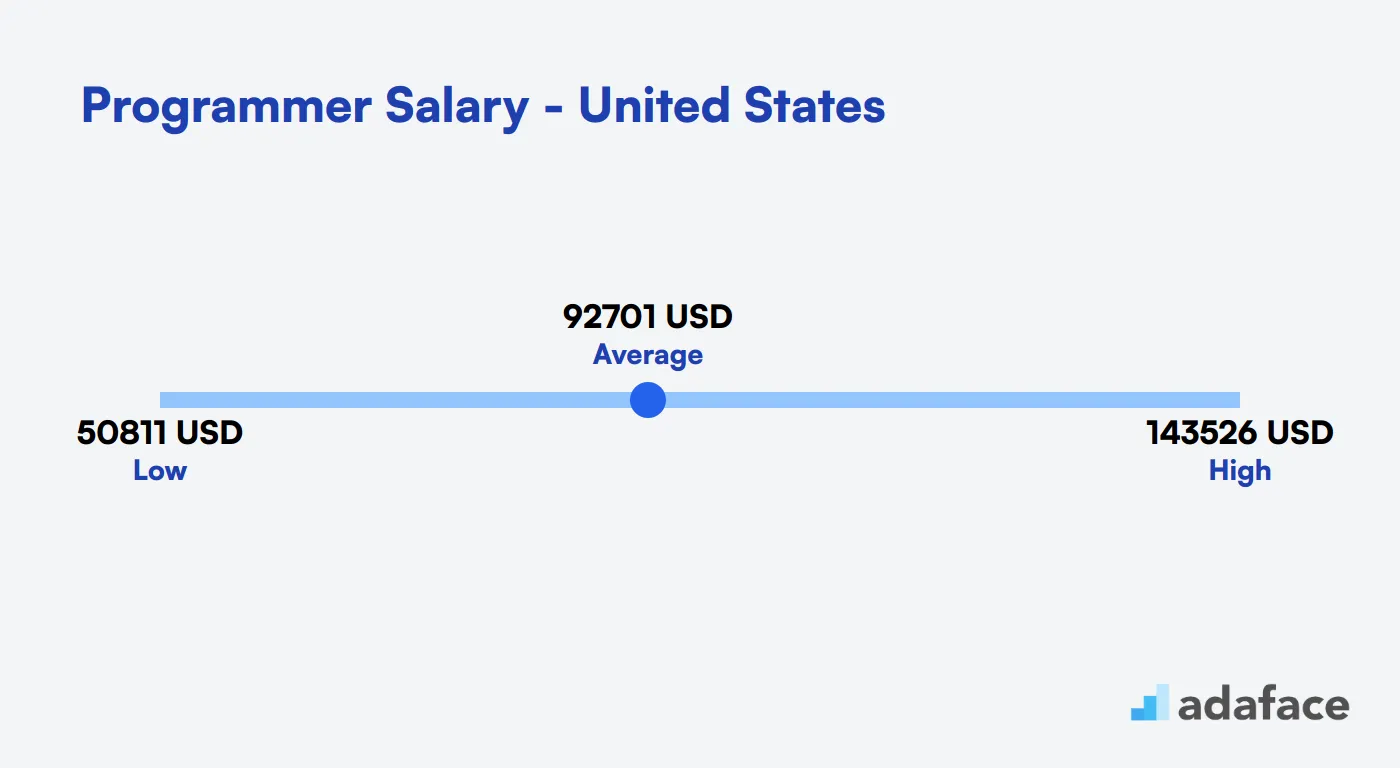In the fast-paced world of technology, hiring the right programmers is crucial for any company's success. They are the backbone of your development team, responsible for building and maintaining your digital products. Many companies struggle with this process, often overlooking the importance of matching candidates' technical skills with the specific needs of their project. It's not just about finding someone who can code but finding the right fit for your team and culture.
This article provides insights into crafting the perfect programmer job description, evaluating resumes effectively, and conducting interviews that reveal the true capabilities of candidates. Whether you're looking for frontend, backend, or full-stack programmers, this guide covers everything you need to make informed hiring decisions. For more details on crafting job descriptions, visit our programmer job description page.
Table of contents
Key Skills and Qualifications for Hiring Programmers
Creating an ideal candidate profile for a programmer role can be tricky. What's considered essential for one company might be just a preference for another. For instance, while React is often a must-have for many Frontend Developer positions, your team might use Vue.js instead.
To help you get started, here's a breakdown of common required and preferred skills for programmers. Remember to tailor this list to your specific needs and tech stack.
Required Skills and Qualifications:
- Bachelor's degree in Computer Science or related field
- Proficiency in at least one programming language (e.g., Java, Python, C++)
- Strong problem-solving and analytical skills
- Experience with software development methodologies
- Ability to work collaboratively in a team
Preferred Skills and Qualifications:
- Master's degree in Computer Science or related field
- Experience with version control systems
- Knowledge of cloud platforms
- Familiarity with DevOps practices and tools
- Industry-specific experience (e.g., finance, healthcare)
| Required skills and qualifications | Preferred skills and qualifications |
|---|---|
| Bachelor's degree in Computer Science, Information Technology, or a related field | Master's degree in Computer Science or related field |
| Proficiency in at least one programming language (e.g., Java, Python, C++) | Experience with version control systems (e.g., Git) |
| Strong problem-solving and analytical skills | Knowledge of cloud platforms (e.g., AWS, Azure, Google Cloud) |
| Experience with software development methodologies (e.g., Agile, Scrum) | Familiarity with DevOps practices and tools |
| Ability to work collaboratively in a team environment | Experience in a specific industry or domain (e.g., finance, healthcare) |
How to write a Programmer job description?
Once you have a candidate profile ready, the next step is to capture that information in the job description to attract the right candidates. A well-crafted job description will serve as a beacon for the talent you wish to attract.
• Highlight key responsibilities and impact: Clearly outline the day-to-day tasks and responsibilities of the programmer role. Emphasize how their contributions will drive projects forward and benefit the company, showcasing the real-world impact of their work.
• Balance technical skills with soft skills: While technical expertise is important—such as proficiency in languages like Python, Java, or C++—don’t overlook the need for soft skills. Problem-solving abilities, teamwork, and communication are just as important in ensuring that a programmer thrives in your environment.
• Showcase unique selling points: What makes your company and this programmer role stand out? Whether it’s innovative projects, a collaborative culture, or opportunities for career advancement, these factors will help attract top candidates who align with your company values. For a detailed starting point, refer to the programmer job description to guide your writing.
Top 10 Platforms to Hire Programmers
Now that you have a well-defined job description (JD), it's time to list your open positions on job platforms to source suitable candidates. Leveraging job listing sites can significantly increase your visibility and access to a diverse talent pool of programmers.
LinkedIn Jobs
Ideal for posting full-time positions and reaching a wide network of professionals. Offers robust search filters and allows direct communication with candidates.

Indeed
Suitable for posting a variety of job types, including full-time roles. Offers a large user base and easy application process for candidates.

Glassdoor Job Posting
Effective for full-time positions, especially when targeting candidates who research company reviews and salaries. Provides employer branding opportunities.

A few notable platforms include LinkedIn Jobs, which is excellent for posting full-time positions and reaching a wide network of professionals, and Indeed, suitable for various job types with an easy application process. Additionally, Glassdoor Job Posting is effective for targeting candidates who research company reviews and salaries.
Keywords to Look for in Programmer Resumes
Resume screening is the first step in finding the right programmer for your team. It helps you quickly identify candidates who match your job requirements and save time in the hiring process.

When manually screening resumes, focus on key technical skills and qualifications. Look for programming languages, frameworks, and development methodologies that align with your needs. Pay attention to problem-solving skills and relevant project experience.
To streamline the process, consider using AI-powered tools for resume screening. These tools can quickly analyze large volumes of resumes, matching them against your specified criteria and providing you with a shortlist of qualified candidates.
Here's a sample prompt for AI-based resume screening:
TASK: Screen resumes for programmer role
OUTPUT: For each resume, provide:
- Name
- Matching keywords
- Score (out of 10)
- Recommendation
- Shortlist (Yes/No/Maybe)
KEYWORDS:
- Programming languages (Java, Python, C++)
- Frameworks (Spring, Django, React)
- Version control (Git)
- [Software development methodologies](https://www.adaface.com/blog/software-development-interview-questions/) (Agile, Scrum)
- Database skills (SQL, NoSQL)
Which skills tests should you use to assess Programmers?
To ensure you're hiring top-notch programmers, incorporating skills tests is a smart strategy. These tests help in evaluating the candidates' ability to tackle real-world problems, which is critical for a programmer's role. Here are some recommended tests from our Adaface library.
Computer Programmer Aptitude Test: This test is designed to measure the basic skills and logical thinking required for programming tasks. Ideal for screening candidates' foundational understanding of programming concepts.
Technical Aptitude Test: Assess the candidates' general technical knowledge and problem-solving skills with this test. It covers a broad range of topics, making it suitable for evaluating overall technical aptitude.
Coding Data Structures Arrays Test: Evaluate the candidate's ability to work with arrays and data structures, which are paramount for efficient coding practices. This test helps you identify those who can handle complex data manipulation tasks.
Coding Debugging Test: Debugging is a critical skill for programmers, and this test focuses on finding and fixing errors in code. It helps in identifying candidates with strong analytical and troubleshooting skills.
Software Engineering Online Test: This test evaluates a candidate's understanding of software engineering principles and practices. A great choice for ensuring your candidate is well-versed with the software development lifecycle.
Case Study Assignments for Hiring Programmers
Case study assignments can be a powerful tool in evaluating a programmer's skills, but they aren't without drawbacks. These assignments can be time-consuming and might deter candidates, potentially leading to missed opportunities with strong talent. Here are three case study assignments that offer valuable insights into a programmer's capabilities while being mindful of these challenges.
Build a Simple Web Application is a great way to evaluate candidates for full-stack or web development roles. This assignment tests both front-end and back-end skills, allowing you to see their approach to creating a functional and user-friendly application. Consider skills required for web developers to tailor your assessment.
Debugging Existing Code is suitable for assessing problem-solving and analytical thinking skills. Present candidates with a codebase containing bugs and ask them to identify and fix the issues. This assignment reveals how efficiently candidates can navigate and enhance existing projects.
Implement a Data Processing Pipeline is an effective choice for data-focused roles. Candidates are tasked with designing a pipeline to process and analyze data efficiently, showcasing their ability to handle data-centric applications. Align this with programming skills interview questions for comprehensive evaluations.
How to Structure the Interview Stage for Hiring Programmers
Once candidates have successfully passed the initial skills tests, it's time to move them to the technical interview stage, where their technical expertise and problem-solving abilities are evaluated. While skills tests help in filtering out candidates who do not meet the basic requirements, technical interviews are essential to identifying the best-suited candidates for the programmer role. These interviews enable you to ask targeted questions that reveal a candidate's depth of knowledge and practical experience.
Here are some sample interview questions to consider for assessing programmers:
- Describe a challenging coding project you've worked on. This helps in understanding their problem-solving techniques.
- How would you optimize a piece of code that is running slowly? Assess their ability to improve performance and efficiency.
- Can you explain the difference between functional and object-oriented programming? This question evaluates understanding of programming paradigms.
- Discuss a time when you had to learn a new technology for a project. This gauges adaptability and learning capabilities.
- What data structures would you use for a basic search engine? Evaluate their knowledge of data structures and their practical application. Learn more about data structures.
How much does it cost to hire a Programmer?
Hiring a programmer can significantly vary in cost depending on the location and level of experience. In the United States, average salaries hover around $92,701, ranging from $50,812 to $143,526. Similarly, in Australia, the average annual salary is about AUD 89,812, with a swing from AUD 62,865 to AUD 120,334. These figures reflect the diverse skills and roles programmers can embody in different regions.
Programmer Salary in the United States
The average salary for programmers in the United States is approximately $92,701. Salaries can vary significantly based on location, with the lowest starting around $50,812 and the highest reaching up to $143,526. For example, in cities like Miami, salaries can range from $85,641 to $175,644, while in Los Angeles, they range from $58,121 to $139,226.

Programmer Salary Australia
The average programmer salary in Australia is around AUD 89,812 per year. Salaries can range from a minimum of AUD 62,865 to a maximum of AUD 120,334, reflecting the diverse roles and experience levels. For instance, in North Sydney, programmers can earn between AUD 71,229 and AUD 127,465, with a median salary of AUD 95,285.

What's the difference between a Frontend Developer and a Backend Developer?
Frontend Developers and Backend Developers are like two sides of the same coin, both essential to web development but often confused due to their interconnected roles. While both contribute to building a seamless application, they focus on different aspects of the development process.
A Frontend Developer is primarily concerned with the user interface and experience. They use languages like JavaScript, HTML, and CSS, along with frameworks such as React, Angular, and Vue, to design and develop UI components. Their focus lies on ensuring fast loading times and responsive interfaces, engaging directly with users.
On the other hand, a Backend Developer works behind the scenes with server-side operations. They manage application logic, databases, and APIs using languages like Java, Python, and Ruby. Backend Developers utilize frameworks such as Spring and Django and focus on scalability and efficient data processing.
Both roles, while distinct, complement each other to create a cohesive application. Understanding these differences can aid in mapping the right skills to the right roles. For more on skill mapping, visit our skill mapping guide.
| Frontend Developer | Backend Developer | |
|---|---|---|
| Primary Focus | User Interface, User Experience | Server, Database, Application Logic |
| Programming Languages | JavaScript, HTML, CSS | Java, Python, Ruby |
| Frameworks | React, Angular, Vue | Spring, Django, Express |
| Tools | Webpack, Gulp, npm | Docker, Kubernetes, Jenkins |
| Key Responsibilities | Design, Develop UI components | Manage Application Data, APIs |
| Performance Focus | Fast loading times, Responsive UI | Efficient data processing, Scalability |
| Testing Methods | Unit tests, Integration tests | Load testing, Integration tests |
| User Interaction | Direct user engagement | Indirect user engagement |
What are the ranks of Programmers?
The programming field has various ranks, which can often lead to confusion about the differences between them. Understanding these ranks can help recruiters and hiring managers better define roles and expectations during the hiring process.
• Junior Programmer: A Junior Programmer is typically an entry-level role, often filled by recent graduates. They assist with coding tasks, learning from senior team members while building their skills.
• Programmer: This rank usually refers to a mid-level professional who has gained some experience. Programmers are responsible for writing, testing, and maintaining code, often working on projects independently or in small teams.
• Senior Programmer: A Senior Programmer possesses extensive experience and often takes on leadership roles within projects. They oversee junior programmers, make key decisions about code architecture, and ensure the quality of software products.
• Lead Programmer: The Lead Programmer is responsible for guiding a team of programmers on larger projects. They coordinate tasks, provide technical guidance, and communicate with other departments to ensure project goals are met.
• Principal Programmer: This is a high-ranking role, focusing on setting the technical direction for teams or projects. Principal Programmers often engage in strategic planning, mentoring, and high-level problem-solving, impacting the organization's overall tech landscape.
For detailed job descriptions, you can refer to our comprehensive programmer job description.
Hire Programmers Who Fit Your Needs
In this blog post, we've covered everything from determining key skills and qualifications, to crafting an effective job description for programmers. We've also explored platforms to find candidates, vital resume keywords, and methods for assessing technical competencies.
If there's one takeaway from this guide, it is the importance of using precise job descriptions and appropriate skills tests to make the hiring process accurate. Implementing targeted assessments like the coding data structures arrays test can significantly aid in selecting the right programmers for your team.
Computer Programmer Coding Aptitude Test
FAQs
Look for programming languages proficiency, problem-solving abilities, understanding of algorithms and data structures, and experience with the relevant technologies for your specific project needs.
An effective job description should clearly outline the responsibilities, required skills, and qualifications. It should also provide insight into your company culture and the impact the role will have on your projects.
Popular platforms include LinkedIn, GitHub, Stack Overflow, and specialized job boards like AngelList, WeWorkRemotely, and Toptal. Each platform offers unique advantages depending on your specific hiring needs.
The interview process should include a combination of technical assessments, problem-solving tasks, and behavioral interviews to evaluate both the technical and soft skills of candidates.
Use coding challenges, technical interviews with live coding sessions, and problem-solving tasks relevant to the role to accurately assess a candidate's skills. Online platforms like those listed on our coding tests page can be beneficial.
Frontend developers should have strong skills in HTML, CSS, JavaScript, and UI/UX design principles, while backend developers should excel in server-side languages, database management, and API integration.

40 min skill tests.
No trick questions.
Accurate shortlisting.
We make it easy for you to find the best candidates in your pipeline with a 40 min skills test.
Try for freeRelated posts
Free resources



